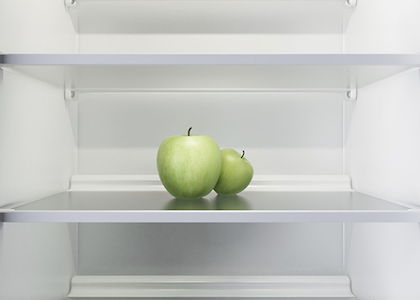
3 Ways Fruits & Veggies Lose Nutrients
By Isabel Smith, MS, RD, CDN
One of the most common questions that I am asked by Rebooters and by private clients is regarding how quickly juices, salads, smoothies and other fresh produce-containing foods need to be consumed to reap the most nutritional benefit.
In short, it’s always best to consume any juices, smoothies, salads, or cut fruits and vegetables as soon as possible. But there’s more…
Most of us prefer to prep as much juice, salad, entree and soup as we can in one sitting to avoid spending any more time than necessary in the kitchen preparing what we’re eating for the next few days. Because more often than not we prefer to prepare in larger batches, the reality is that some of our food will end up sitting in the refrigerator for a few hours if not a few days. Don’t fret! It’s always better to consume nutrient-dense foods than to not consume them out of fear of nutrient loss.
3 factors that contribute to nutrient loss, and 3 tips to overcome them:
1. Exposure to oxygen
For example when you cut produce into a million pieces and then leave it in the fridge in a large bowl, this allows the produce to be exposed to a lot of circulating air and particularly affects nutrients like vitamin C. We can’t completely stop the exposure to oxygen, juicing causes a good amount of oxidation, but remember that consumption of these nutrient-rich foods outweigh the potential of some nutrient degradation.
Tip: Purchase air-tight containers like mason jars or glass containers that have tightly-fitting lids. Cut your produce immediately prior to using; avoid cutting produce ahead of time when possible.
2. Exposure to light
Certain vitamins including vitamin A, B2, B6, B12 and folic acid all experience nutrient degradation due to exposure to light.
Tip: If you can’t consume them within 24-48 hours after preparing, store juices, smoothies, and other fresh produce-containing food items in opaque containers or in dark areas of the refrigerator.
3. Old & over-ripe produce
This makes sense, right? The longer the plant has been out of the ground the less nutrition it contains. So, here’s another reason to get yourself to the local farmers market to pick up freshly grown produce. Local produce typically travels a shorter distance and is usually picked closer to the time of consumption than conventional and even certain organic produce grown in far-away lands. Therefore, purchasing your produce from places such as farmers’ markets can help to get you more phytonutrients right off the bat. Another important aspect of this piece is consuming the produce as soon as you’re able to do so.
Tip: Purchase fresh produce at the farmers market. If you can’t purchase really fresh produce, consider purchasing frozen produce because frozen produce is picked from the ground then immediately frozen — this means much of the nutrient content is retained. Store juices in air-tight containers like mason jars or stainless-steel for 24-72 hours in the refrigerator and 7-10 days in the freezer.
Remember that it’s always better to include fruits and vegetables than to not include them! Do your best to purchase local produce and certainly prepare foods in advance to save yourself preparation time in the kitchen, as it makes the whole process a whole lot easier!